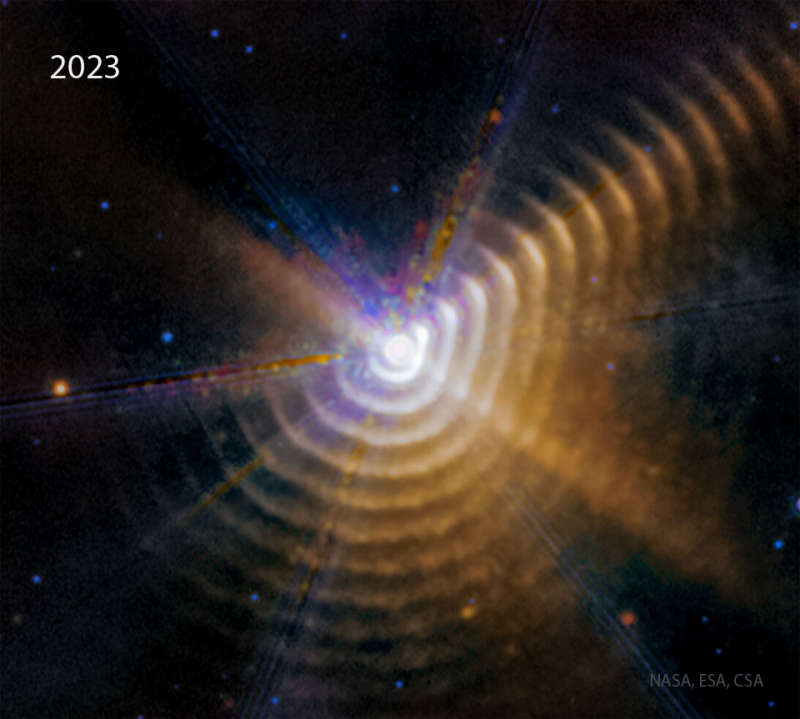
|
Credit & Copyright: NASA,
ESA,
CSA,
STScI,
E. Lieb
(U. Denver),
R. Lau
(NSF NOIRLab),
J. Hoffman
(U. Denver)
Explanation:
What are those strange rings?
Rich in dust, the rings are likely 3D shells --
but how they were created remains a topic of research.
Where they were created is well known: in a
binary star system that lies about 6,000
light years
away toward the
constellation of the Swan (Cygnus) --
a system dominated by the Wolf-Rayet star
WR 140.
Wolf-Rayet stars are massive, bright, and known for their
tumultuous winds.
They are also known for creating and dispersing heavy
elements such as
carbon,
which is a building block of interstellar
dust.
The other star in the
binary is also bright and massive -- but
not
as active.
The two
great
stars
joust in an oblong orbit as they approach each other about every eight years.
When at closest approach, the
X-ray
emission from the system increases, as, apparently,
does the dust expelled into space -- creating
another shell.
The featured infrared
image
by the
Webb Space Telescope resolves
greater details and
more dust shells than ever before.
Images taken over consecutive years show the
shells moving outward.
|
January February March April May June July August September October November December |
| ||||||||||||||||||||||||||||||||||||||||||||||||
NASA Web Site Statements, Warnings, and Disclaimers
NASA Official: Jay Norris. Specific rights apply.
A service of: LHEA at NASA / GSFC
& Michigan Tech. U.
Based on Astronomy Picture
Of the Day
Publications with keywords: Wolf-Rayet star
Publications with words: Wolf-Rayet star
See also:
- APOD: 2025 November 24 Á Apep: Unusual Dust Shells from Webb
- APOD: 2025 March 17 Á Thors Helmet
- APOD: 2025 February 3 Á Wolf Rayet Star 124: Stellar Wind Machine
- Sharpless 308: The Dolphin Head Nebula
- APOD: 2024 January 9 Á Thors Helmet
- APOD: 2023 March 29 Á Sh2-308: A Dolphin Shaped Star Bubble
- Wolf Rayet 124
